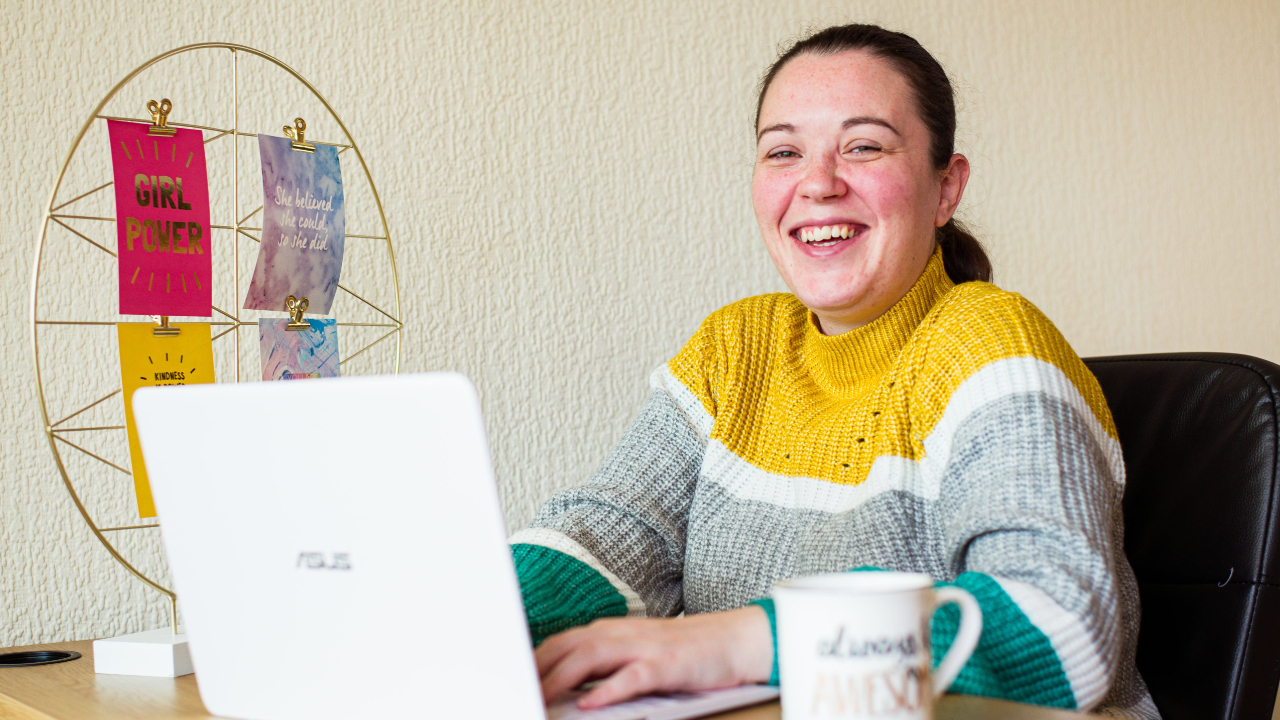What is inclusive web design and why does it matter?
Jun 06, 2023
With so much free access to information and the ability to connect with people from all over the world with different abilities, gender, sexuality, race and more inclusion has never been such a hot topic. However there's much more to it than you might initially think.
We asked Kim Scotland, to explain what impact inclusive web design can mean for your website? Websites don’t police who can use them, can they? You’d be surprised.
Over to Kim to explain what inclusive web design is and why it matters.
What exactly is inclusive web design and why is it so important?
Inclusive web design is all about creating websites that are inclusive and accessible to as many people as possible. It means making sure that everyone, regardless of their abilities or background, can easily use and enjoy using your website and consuming the content on it.
It’s important for a few reasons. Firstly, accessibility. Inclusive web design means that people with disabilities can use websites without hassle. It’s about making the web a more equitable place for everyone.
But it’s not just about people with disabilities. Inclusive web design improves the overall experience for everyone. When you take an inclusive approach to web design, websites are easier to navigate, understand and use for everybody. So it’s a win for all your website visitors, not just those who have a disability.
Not only that, but in most places your website is legally required to be accessible. So by creating an inclusive website from the start, you’ll avoid any legal headaches down the line. For those interested, Lucy adds that the requirement for a website to be accessible in the UK is covered by the Equality Act 2010. As a business owner you are required to make "reasonable adjustments" to make your site accessible to people with disabilities.
Not only is having an inclusive website the right thing to do but you’ll be able to reach a wider audience and potentially sign more clients / customers.
So why is inclusive web design important? Because it means creating a web that’s fair and fun for everyone. By being responsible you’ll be able to expand your reach and show that you care about equality and inclusivity.
The benefits of inclusive web design
For users
- Access for all: Inclusive web design means that everyone can join the online fun! People of ALL abilities can easily access and navigate websites. When your site is compatible with screen readers and has good colour contrast (among other things) everyone can use the web
- Awesome user experience: Inclusive design means a better user experience for everyone. Everyone benefits from clearer navigation, properly structured content and responsive design.
- Brand loyalty: When users find websites that’s accessible and user friendly, they’ll spend more time there and probably come back time and time again. And the more time they spend on your site, the higher the chance of them buying and / or subscribing. They get the help they need and you make more sales.
For businesses
- Legals: Many countries including the UK and US have laws around accessibility. An accessible website will save you from legal trouble or penalties down the line.
- Brand reputation: Inclusive web design lets you invite everyone to your digital party!By considering the needs of everyone, you'll attract new customers and show your business is all about inclusivity. You'll stand out from the crowd and earn major bonus points for being socially responsible.
- SEO: Accessible websites are easier for search engines to understand. So the more inclusive your site, the better an impact it will have on your Google search rankings.
In a nutshell, inclusive web design is great for users and businesses alike. Users get easy access, fantastic user experiences, and a website that speaks their language. Businesses expand their audience, follow the rules and rock the search results. Everyone wins with inclusion.

How to make your website more inclusive
Now you know why inclusive websites are important to both users and business owners, let’s talk about HOW you can actually make your site more inclusive.
Here are some really easy tips to make your website more accessible. This list is not exhaustive, but rather a list of the most common accessibility issues I come across.
Font size
As a minimum your fonts should be at least 16px. Depending on your chosen font, you might want to make this even bigger. The font I use on my site is small so my base font size is 20px.
Page Structure
Headings sign post users to different content on your page. It makes your content easy for people to skim-read, and pinpoint the information they want whether they use a screen reader or not.
You should only have a single H1 heading on a page, and then the rest should be nested. Here’s an example:
- H1
- H2
- H2
- H3
- H3
- H3
- H2
- H2
- H3
- H4
Alt descriptions on images
People who have a visual impairment will likely use a screen reader to read your content aloud. They can’t read images but they can read the description you give them.
Different kinds of images need different kinds of alt descriptions. The Web Accessibility Initiative is a great resource on this, and goes into this in great depth.
Colour Contrast
White text on a yellow background will be difficult to read even if you have 20:20 vision.
Make sure that there’s enough contrast between your fonts and background colours by using the Web Aim Contrast Checker.
Emojis
When screen readers come across emojis they read the emoji description, no matter how many times the emoji is repeated.
So be wary of emoji bombing (where you repeat the same emoji) because your visitor will have the same description read aloud for each time you’ve placed it on the screen.
If you’ve ever heard a screen reader read an emoji, you’ll find that it gets very old very quickly.
I used to be a regular emoji bomber until a friend sent me a recording of my Instagram bio read through a screen reader. I still cringe when I think about it.
Also avoid replacing words with emojis too, because that can be really confusing.
Link Wording
Make your links as descriptive as possible and add the hyperlink to those words.
Example: ‘Visit the Kim Scotland Web Design website’, rather than ‘Click here to visit the Kim Scotland Web Design website’.
People who use screen readers will often tab through the links on the page. If every link is worded as ‘click here’ they won’t know what they’re clicking on.
Provide transcripts and captions on videos
Adding captions and transcripts for videos is good for your users and your website too.
Users can watch with the sound off and still consume the content of your video, or they can read the transcript at their own pace.
One underrated benefit of transcripts is that it will help your search engine rankings. Currently search engines can’t ‘read’ videos, but they can read text.
Use inclusive language
Inclusive language is about being respectful to everyone no matter who they are. It means using words that make everyone feel included and respected. Using gender neutral terms, avoiding stereotypes and making assumptions based on race, religion, age, class and all that jazz.
Having a not-very-inclusive website does not make you a bad person
If you’ve read this list and are now realised that your website doesn’t include many or any of these inclusive design features, it’s okay.
Often when we start thinking about inclusivity we realise how we may have inadvertently been excluding people from different parts of our business.
And we feel bad, right? Because we’ve all felt excluded at one point or another in our lives, and the thought of inflicting that feeling on other people can evoke feelings of guilt or shame.
It wasn’t deliberate.
You didn’t know what you didn’t know (ah that old chestnut).
But now you do know. And when you know better, you can do better.
Summary
Inclusive web design is all about creating websites that can be used by people of all abilities and backgrounds.
It’s important because it makes sure that anyone can browse the web and interact with websites in a way that is easy for them.
More than that, inclusive web design means everyone gets a better user experience, not just people with disabilities.
End users and businesses both benefit from using inclusive websites. Users get a great user experience, making them more likely to buy a service or product which benefits business owners.
Links to Kim’s website and social media are here:
Stay connected with news and updates!
Join our mailing list to receive latest news and updates from our team.
Don't worry, your information will not be shared.
We hate SPAM. We will never sell your information, for any reason.

